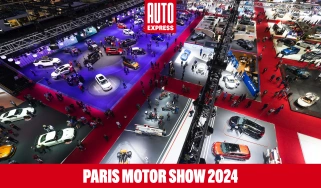Charge your EV to 80 per cent and crack on with your journey – it’s cheaper and faster

I’ve found myself recently pondering EV charging curves. Don’t judge me. It’s the fault of Christian Stein, the boss of Renault’s EV division Ampere, who mentioned the stat that more than half of electric car drivers stay plugged in all the way to 100 per cent on a public charging point. And at face value, that makes sense – why wouldn’t you fully charge?
But once you understand geeky stuff like charge patterns, the picture changes. From 80 per cent to fully charged, the top-up speed drops to preserve the battery’s longevity.
There’s no reason why a regular driver moving across from a petrol or diesel car would know this, and not enough is being done to educate people. It sounds perfectly logical to charge to 100 per cent, especially if you’re nervous about public charging and range anxiety (both of which quickly become less of a worry with experience of driving an EV).
The latest Renault Megane is the first car I’ve driven that makes it blatant, setting out the time it will take to charge to both 80 per cent and 100 per cent.
At a 50kW charger, for example, the car was showing 28 per cent battery remaining, and the dash readout predicted a 43-minute wait to get to 80 per cent. But it then also showed it would take a further 37 minutes to reach full – almost doubling the time at the charger. So it’s probably not worth hanging on for unless you’re really going to need those additional miles.
When you put it like that, then the message doesn’t take long to sink in. Get to 80 per cent and crack on with your journey – it’s cheaper, faster and will free up the charging point more quickly for anyone waiting. Even if you’ll then need another charge later on, it’s a no-brainer, but only if you’re in the know.
Running an EV is a learning experience, and once you understand, then it’s all straightforward. But it’s really handy when a car makes it easier to get your head round the basics.



